Research on Lifestyles created by Content
Organizational structure of the research
Planning and promotion
Fumio Hasegawa, Professor of Meiji University, School of Global Japanese Studies
Research and promotion
Kazuo Midorikawa, CEO of Digital-Image
Tadakazu Fukutomi, PROFESSOR, Senshu University
Hirohiko Koyamada, CEO of Think Communications, Inc
Akio Kunii, Chief researcher of InfoCom Research, Inc.
Research partners
Kazuhiro Niinuma, Counselor of Office of the President, Wellness Department, Namco Bandai Games, Inc.
Yujiro Ono, Chief researcher, Research Laboratory of Human Amusement, AM Specialized Machine Development Department, Namco Bandai Games, Inc.
Hisakazu Hirabayashi, CEO of INTERact
Shuzo Ueda, Director of Kyoto International Manga Museum
Chapter 1: Purpose of the Research
1-1. Background
So-called “Content”, which includes manga, anime, and video game, has been consumed mainly for the purposes of entertainment and leisure-time amusement. However, Content has started to garner attention in areas other than entertainment due to its friendliness and its eye-catching characteristics. It has started to be used for the purposes of improving everyday convenience in particular.
For example, manga is now very familiar because it even appears in various instruction manuals and community pamphlets. In addition, manga and anime have started to be used for educational purposes to promote understanding regarding luxury grocery items or cuisines, such as wine. Additionally, the game console Wii, which was released last year by Nintendo, can function as a sport simulator and serves as a lifestyle-oriented device in various areas, such as health management. This trend will be accelerated with the development of our information-driven network society. In this research, we will investigate the relationship between Content and everyday life by researching current conditions and trends.
1-2. Purpose of the research
With the above background in mind, the purpose of this research is as follows.
(1) To study the potential usage of Content (manga, anime, video games, etc.) in areas other than entertainment.
(2) To analyze how Content creators view the relationship between Content and everyday life.
(3) To identify and pni-che
Niredict how Content will be involved in our everyday lives.
1-3. Details of the research
We will conduct research in the following specific areas.
- (1) Analysis of social environments that promote the current conditions.
- (2) Case research on the relationship between Content and everyday life. Examine cases that match the purpose of our research from books, magazines, and websites.
- (3) User evaluations Conduct a survey interview of 10 subjects ranging in age from their 10s to their 50s regarding the current usage of Content and its involvement in their everyday lives.
- (4) Intentions of Content developers Conduct a survey interview with Content providers and researchers that match the purpose of our research.
- (5) Future trend analysis Discuss future trends with other members of the research team.
- (6) Links with future lifestyles Based on the results of our research, study the relationship between Content and lifestyle.
1-4. Research methods
- (1) Conference discussions with experts
- (2) Case studies using relevant literature
- (3) Survey interviews with Content developers
- (4) Interview-style questionnaire survey
Chapter 2: Lifestyles Created by Content
2-1. Recent trends related to Content
(1) What is Content?
In common usage, the term "hardware" refers to physical components while "software" refers to intangibles, such as information and know-how.
With the arrival of computer technology, those intangibles have started to be recognized as tangibles. This idea began spreading among the general public when computer software was first distributed through physical media, such as floppy disks and CD-ROM.
Traditionally, an automobile was viewed as a mere physical object; however, it started to be considered as an assembly composed of software. Automobile manufacturers not only assemble various parts but also regulate and adjust every part so that they can produce high-quality, trouble-free cars. People started to recognize that these kinds of effort are the basis for industrial competitiveness in Japan. Such concepts of software as know-how are difficult to verbalize and cannot be considered by treating the concepts separately.
Thinking in this way, we realize that the concept of "software" has expanded. We all know that the essence of software cannot be seen with our eyes, but from the perspective of software developers, software forms an actual substance called a computer program that is written in a clear, strict language. However, software such as the "Toyota way" cannot necessarily be seen in the same ways because they constitute "tacit knowledge."
Separately from the expanded concept of software, the term Content is now widely used. Content is also a form of information and can be transferred, copied, and distributed. In this aspect, Content is a type of software and not hardware. In addition, like the example of the automobile industry, it incorporates tacit know-how. So, why bother using the term "Content"?
Content refers to items like video games, manga, anime, and novels, which will be discussed later. Obviously, these are not hardware but software; however, they are different from computer programs. Also, in terms of usefulness, they are not "noise" but "information"; however, they have different aspects compared to information such as news. One distinguishing characteristic of Content is that it is not a means to accomplish something else; rather, the Content itself is the end. In other words, Content is eventually consumed. For example, a computer program is a form of software, but the software itself is not consumed. The usefulness of a program exists in its ability to perform a specific task on the computer. As for news, although there are some types of news that are purely for entertainment purposes, the main purpose of news is to understand and investigate economic and social trends so that people can determine their own courses of action by referring to the information.
Content is information that is worth being seen, heard, and operated. That is to say, Content is itself an object of human desire, like the desire to eat. We started this research from the perspective that Content has characteristics that satisfy fundamental human desires, which are an essential part of human existence. This is the reason why Content can be a powerful tool when applied to different fields. Moreover, the know-how involved in Content production should provide a common basis that can be used in various different fields.
(2) Recent trends related to Content
Traditionally, Content has been consumed for amusement or entertainment purposes. This has meant that the purpose of Content has had a rather negative association. People have spent most of their time working to live and learning to survive. In such a society, which is precisely the kind of society we currently live in, things like "leisure", "entertainment", and "amusement" are unnecessary and therefore unappreciated.
However, a fundamental change in values is now emerging.
Although the importance of Content has started to be recognized, the consumption of Content has been rather poor. Sales of game software, which constitutes the biggest portion of Content consumption in Japan, hit a record of 1.3 trillion yen in 2006; however, past data show that after it reached 1.23 trillion yen in 1997, it continued to drop and stayed at around 1 trillion yen for several years since 2000. As shown in Diagram 2-2, after the highest record of 580 billion yen in 1997, sales of software for home-use game consoles in particular dropped by almost a half to 309 billion yen in 2003 and have not yet returned to the peak number.
As for manga magazines, "Shonen Jump" itself boasted a circulation of more than 6 million copies at one time; however the number has been dropping and is below 3 million now. As for anime, sales have been better since the DVD market opened up compared to when distribution relied heavily on TV; however, sales seem to have stopped growing lately. As far as music is concerned, there used to be more than 20 million-seller albums each year between 1995 and 2001; however, there were only 6 such albums in 2006 and 3 in 2007. Although online distribution businesses have been growing, these account for only 5% of overall sales and are not enough to compensate for other losses.
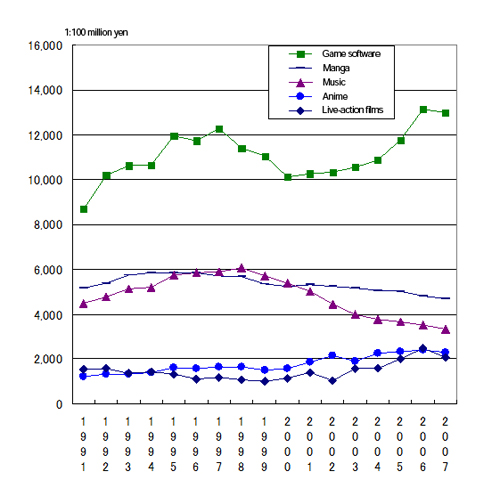
Diagram 2-1: Trends in sales in the Japanese Content industry
- 1) Game software: total for software for home-use game consoles and arcade game operation sales (numbers cited from "CESA Games White Paper") and PC games, cell-phone games, and online games (number cited from "Digital Content White Paper")
- 2) Manga: total circulation of magazines and books. Data provided by the All Japan Magazine and Book Publisher's and Editor's Association
- 3) Music: total music production reported by the Recording Industry Association of Japan. Audio only; video is excluded.
- 4) Anime: total for movies, TV, and videograms. Data provided by Media Development Research Institute, Inc.
- 5) Live-action films: total of box-office sales (reported by the Motion Picture Producers Association of Japan, Inc) and sales of visual software (reported by the Japan Video Software Association). Sales of animated films are excluded from this number.
- Diagram Created by Kazuo Midorikawa
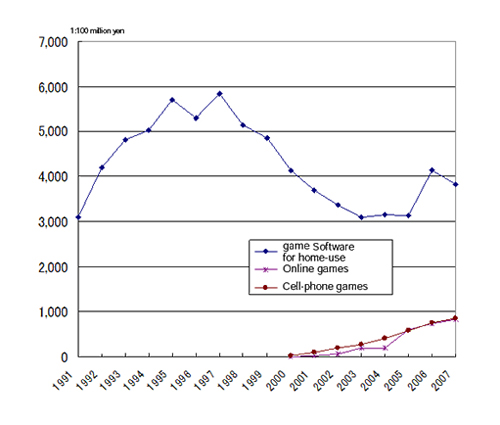
Diagram 2-2: Trends in the sales of game software
Note: Numbers are cited from each year's "CESA Games White Paper" (for game software for home-use) and "Digital Content White Paper" (for online games and cell-phone games).
Diagram Created by Kazuo Midorikawa
After this downturn, a dramatic change occurred in the gaming industry. It all started when a handheld game console called Nintendo DS was released. Nintendo DS (hereafter referred to as "DS") was first released in December 2004, and the total unit sales in Japan have exceeded 23 million as of October 2008 (reported by Satoru Iwata, President of Nintendo, at the Nintendo Fall Conference 2008). This number continued to grow after its newest model, called DSi, was released. The growth rate is incredible considering that it took Sony 2 years and 9 months to sell 20 millions units of its Playstation 2 (See Diagram 2-3)
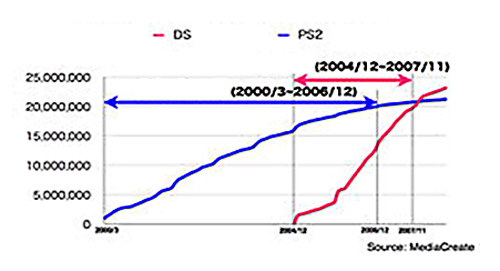
Diagram 2-3: Comparison of sales growth rates of DS and PS2
Excerpt from materials presented at the 2008 Nintendo DS Fall Conference
http://www.nintendo.co.jp/n10/conference2008fall/presen/index.html
In addition, there is the astounding fact that about half of DS users were women while more than 90% of PS2 users were men, according to Nintendo research team. The majority of PS2 users were predominantly males aged between 18 and 20. On the other hand, DS has two major user groups, which are users aged between 10 and 12 and users aged between 30 and 32. In addition, the distribution of the user groups is much less clustered. Game consoles used to be limited primarily to young males, but now, the user base has dramatically broadened.
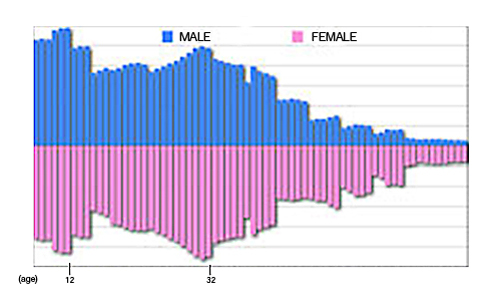
Diagram 2-4: Sex and age distribution of DS users (Nintendo research)
Excerpt from materials presented at the 2008 Nintendo DS Fall Conference
http://www.nintendo.co.jp/n10/conference2008fall/presen/index.html
Research shows that DS users enjoy playing games with their family members. Based on Nintendo's research as of July 2008, the number of users for one game console is 1.8 for PSP, 2.8 for DS, and 3.4 for Wii, which is a stationary game console. Moreover, when it comes to the number of DS consoles owned per family, for families that already own at least one DS, the number is 1.8. This means that multiple DS consoles are likely to be owned by a single family.
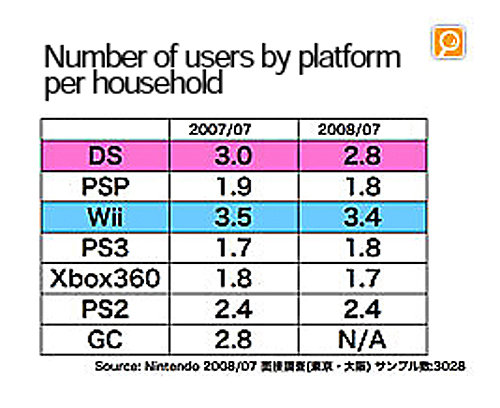
Chart 2-1: Number of DS users in one household and number of DS consoles owned per household
Excerpt from materials presented at the 2008 Nintendo DS Fall Conference
http://www.nintendo.co.jp/n10/conference2008fall/presen/index.html
This phenomenon can be described as a revolution, or a Content Revolution, in the gaming industry.
DS is a handheld game console. The distinguishing features are its dual screens and intuitive interface that includes a stylus. However, these characteristics alone cannot explain its rapid success.
(3) How DS is used
The significant characteristic of Nintendo DS is that it is used as a communication tool among family members, particularly children and their mothers as indicated by the fact that the two main user groups are users around 10 years old and users in their early 30s. There is also a peak around the age of 30 among males, so we can infer that fathers may be using the DS to communicate with their children as well. DS is a game machine that can be enjoyed by everybody, with anyone, everyday because it allows users to play games with two or more players by connecting multiple units with cables.
There is a DS game software that has been a huge hit . It is called "Animal Crossing: Wild World". As with "Brain Age", it has sold a total of 4 million copies within Japan and 10 million copies around the world. It has become a mega-hit.
In this game, there is a community maintained by animals. The life in the village is a strange mixture of primitive and modern lifestyles; for example, users have to apply for a mortgage when they join the village, but they are not forced to work to pay it off. Users can go to the forest to gather fruits to sell them at a supermarket. Users can also earn some money by helping postal workers. With the money earned, users can buy a fishing rod so that they can fish in the river or a TV. The users work to get along with the other villagers, and so on. The story continues in this way in an endless manner.
"Animal Crossing" was criticized by software creators for lacking the conventional elements of game play, and it has been said that it would have never entered the market if it had been developed by a conventional game company.
In the past, typical game users would line up in front of a game store to get the newest game on the release date and then play the game all the way to the end all night long before selling it off at a second-hand store. On the other hand, for "Animal Crossing", young women often play the game everyday for 20 to 30 minutes before going to bed.
Obviously, something has changed. The virtual and real worlds are being bound together and brought into daily life.
Another characteristic of DS is that educational software is making explosive sales. These kinds of software had previously not been recognized as games, but "Brain Age: Train Your Brain in a Minute a Day", which was released in May 2005 under the editorship of Dr. Kawashima of Tohoku University, boasts sales of 3.7 million copies. In addition to this, other educational software making a big hit including "English Training: Have Fun Improving Your Skills" (2 million copies), "Imasara Hito ni wa Kikenai Otona no Jōshikiryoku Training DS (Common Sense Training)" (1.5 million copies), and "Shaberu! DS Oryōri Navi (It talks! DS Cooking Navigator)" (0.9 million copies). One noteworthy fact is the sales of such practical software are not temporary; instead, these games have been in high demand for a long time since they were first released.
(4) Why is Nintendo DS so well accepted?
We asked the developers about their intentions. At the 2005 Nintendo DS Fall Conference held on October 5, 2005, Satoru Iwata, the president of Nintendo, stated: "We developed this product with the intention that every user, regardless of age, sex, or gaming experience, could enjoy video games from the same starting point. In order to accomplish this, we incorporated various features into the device, such as the dual-screen, the touch-screen, microphone input, and wireless communication."
For conventional game consoles, including Nintendo Famicon and Sony Playstation, game controllers have been developed to allow players to perform delicate operations. For example, the Nintendo's patented cross-shaped gamepad allows players to maneuver a character in a game in up/down and right/left directions. Pushing the upper and right keys at the same time in the correct way makes the character jump to the upper right so that it can leap over an obstacle or the like. This means that the more a user practices, the higher their scores become. As motivation is one of the most important factors of a game, this works out favorably. Players are motivated to practice more to accomplish their goals. However, once the player finishes one game, they tend to ask for more difficult games. Therefore, the next version of the game must require higher levels of techniques. In this way, the level of difficulty of a game begins spiraling upward to a point where a novice player can no longer play. As a result, it became difficult for new users to join in while existing users got older and became more fanatical over the years.
This is how the game industry ended up suffering drops in sales in the area of home-use game software. Based on the lessons from this situation, Nintendo developed a new game console with a new concept that "every user, regardless of age, sex, or gaming experience, could enjoy video games from the same starting point."
As for hardware, the most noticeable characteristic is the dual-screen or double-screen. In fact, the name "DS" stands for “Double Screen”. The screens can be used in various ways. For example, the upper screen can be used to display the general situation while the lower screen is used to display the details. Moreover, the lower screen can be used as a touch-panel input screen to compensate for space limitations. It is a revolutionary idea.
However, improvements in hardware alone would never create such a big hit. To create a game revolution, software would perform a vital role. Although Nintendo does not make any statements regarding software, one of the biggest factors is that they were able to start selling various software, including software that was not considered marketable, by implementing a policy of “Entertaining All Customers” and doing away with severe screening processes on the marketability of various types of software.
In addition, as the technology of game consoles continued to improve since PS2 was released, the hardware started to provide high-definition graphics and became capable of handling advanced image processing, causing software development costs to skyrocket from several hundreds of millions of yen to several billions of yen. To reduce the risk of irrecoverable costs, most companies ended up rehashing popular software through so-called version upgrades. Diagram 2-6 shows the percentage of game software among the top 30 and top 100 sellers that are a part of a series. In 2003, the majority of games were "version upgrades", which accounted for 93% of the top 30 and 86% of the top 100.
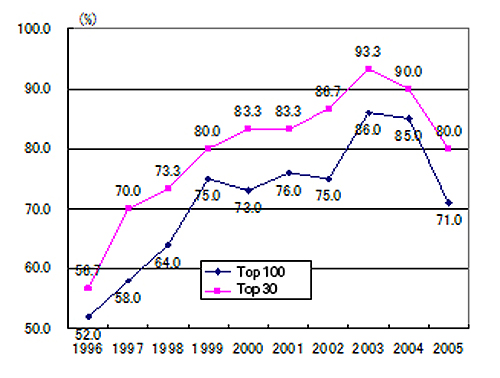
Diagram 2-6: Percentage of game software that is part of a series (Top 100)
Note: Data taken from "Shukan Famitsu" and aggregated by Kazuo Midorikawa
On the other hand, because DS was developed as a handheld game console, the production cost was low at several tens of millions of yen. That is a big factor for its success because Nintendo was able to easily take risks of losses at this level. As evidenced by Diagram 2-6, the number of newly released software increased in 2005, which is when the production of DS software moved into high gear.
The main reason behind the success of DS is not exactly because they intentionally tried to develop marketable software. Instead, their success was largely a result of the circumstances in which they had more opportunities to produce various types of software that met user needs.
Nintendo discovered the needs for such software and expanded the genres covered. At the abovementioned conference, President Iwata made the following comment. This comment itself is clear evidence that they are taking this direction. "According to our research, overall, customers are satisfied with ‘Brain Age’. However, the biggest request we’ve received from our users is that they want to try more different types of training. So, we responded to this need and produced ‘Brain Age 2’".
Now we understand that they intended to provide hardware that "everyone can enjoy", but one question still remains: how did "non-game" software, which had once been considered "unmarketable", become so popular?
(5) Why makes Content interesting?
As stated in the first chapter, Content itself is an object of human desire. This means that the act of consuming Content provokes positive human feelings, such as interest. Now, why do people find Content interesting? Understanding the answer is important in order to utilize Content in everyday life. Content becomes useful when its methodology is applied to various fields, not when its actual form of representation, such as manga or games, is directly transferred to other fields.
We will now examine two different types of Content. The first is story-type Content, such as novels, movies, anime, and manga. The second is interactive game Content that changes based on the operations of a user.
Among the story-type Contents, advanced analysis has been conducted on hits in the movie business, where huge investments are required and around 100 years of experience has been accumulated. Such analyses are most advanced in Hollywood and are not simply film critiques based on little evidence; rather, almost like a proven theory, it gets to the point where certain factors always lead to big hits and the absence of certain factors always lead to failure ).
The following are some of the findings that have been accumulated in Hollywood. We have summarized the knowledge at our own discretion based on our own subjective views.
- (1) The most fascinating aspect of a movie is that the audience can become emotionally involved in the story. This is normally done through a hero, the protagonist.
- (2) The hero is essentially self-giving. He/she has to learn something and grow up in the story. In other words, a hero is a person who changes over the course of the movie.
- (3) Therefore, the theme of the story must be a conflict that is universal to all people. In order to impress the audience and win their acceptance, the story must have the following 4-step structure.
- (4) The first act describes the protagonist's daily life before making a departure and a decision to undertake an adventure.
- (5) The first half of the second act describes the process of the adventure from the departure, the challenges, and the biggest challenge.
- (6) In the latter half of the second act, the hero faces the biggest challenge and must overcome it. After that, he/she is rewarded and returns to his/her regular life.
- (7) The third act describes the return to everyday life and the return home with the reward.
Obviously, in order to make a blockbuster based on the 4-step rule, more details and creativity are needed; however, this is not the point. The point is, this structure allows people to identify with the protagonist and become emotionally involved in the story. The steps starting (2) in this structure are the necessary conditions for develop their empathy.
Now, why does empathy make people feel good?
People have to learn various skills and know-how to survive. In ancient times, when people lived like animals, they had to pay attention to the external environment in order to respond quickly to dangers, such as a fierce animal or a poisonous snake, to protect themselves. After societies were formed, the most dangerous enemy became other human beings. People have to learn to deal with various interpersonal problems to enjoy long lives. To survive such conditions, people have to accumulate experiences and learn new skills or know-how. Such behaviors are part of survival skills and are almost instinctive. During the course of human evolution, the learning of those skills is encouraged by the experience of pleasurable feelings.
However, learning by experience is risky. There is always a chance of failure and great cost. In this respect, a story is a great way to experience someone else's life without taking any risk. This is one reason why people are attracted to and enjoy stories, such as stories in movies, anime, manga, and novels ).
In a game, the player is essentially the protagonist. For this reason, the player's should experience a degree of empathy equivalent to when they watch a movie. On the other hand, in story-type Content, the protagonist becomes entangled in conflict and adventure regardless of the audience or reader's wishes and the story develops as an inevitable consequence. As a result, when the adventure is finished or the conflict is resolved, the sense of fulfillment is strong. On the other hand, a player of a game is rewarded for their skillfulness of operation, and this provides a strong motivation to continue playing. For example, when the player defeats an enemy, points are rewarded. These points enable the player to obtain various items to defeat even stronger enemies. This is a vital element of a game. There are many genres of games. For instance, there are action games, where the player has to respond quickly to the situation presented to them. There are also RPG games, where the player undertakes an adventure under preset circumstances to accomplish a certain task (such as saving a captive princess or finding a lost father). Along the way, the player has to solve mysteries and defeat enemies. Another genre is dating simulation games; for example, the player makes an effort to win someone's love on graduation day. There are also war simulation games, where the player studies the situation and develops strategies. These games require various skills, such as quick and responsive operations and intellectual knowledge. As stated earlier, all of these games help people learn and improve basic survival skills or know-how.
In fact, although stories and games use slightly different tools, both serve the same purposes; that is, to allow people to learn and improve human survival skills and know-how. As we are all genetically programmed to find such Content interesting, it is interesting to us and the consumption of such Content becomes an end in itself.
Considering the above theory, playing educational software like "Brain age" fits the purpose of learning human survival skills. Therefore, everyone felt that they should try it out. However, when the instinctive desire for the type of game had not yet been expressed in an explicit form, even though people recognized the need at a subconscious level, the idea was instinctively repressed. Even so, this software became a big hit. The reason is that Nintendo offered users a reward for playing the game; that is, the reward of becoming smarter. Conventionally, it was believed that intellectual capacity was fixed at birth; however, this software claims that "If you train your brain, your brain age can be reversed".
2-2. Lifestyles created by Content
As it stands, Content has started to be applied in the fields discussed earlier. For example, manga presentations are used for bulletins and educational textbooks. Applications in the field of healthcare field, such as rehabilitation training, are gradually being developed. Actual examples will be discussed later.
However, the daily application of the methodologies of Content has only just begun and further progress is expected. In order to make this happen, it is hoped that education will be provided to the general public to disseminate the methodologies of Content.
When Content is applied to everyday life, the following kinds of lifestyles will likely be formed.
(1) Content breaks barriers
The 20th century was a century of progress. However, having entered the 21st century, we realize that it is impossible for the world to continue progressing forever. It has become obvious that there are limits to energy and resources as exemplified by the escalating prices of crude oil and other resources. Environmental issues such as global warming also cast dark clouds over the world. Historically, we experienced a period of stagnation in the Middle Ages. However, growing societies such as those in the Middle Ages can afford temporary recessions. In today’s non-growing society, the problem is actualized in the form of layoffs of temporary workers. In this situation, a gloomy mood will prevail in our society as people lose hope that society will improve and that their efforts will pay off. People, especially young people, will lose their ambition. We may not be able to achieve the desired effects of education for our youths.
As we are in such an unmotivated society, our education system has to be changed. In order for the dispirited students to acquire the necessary knowledge and skills easily, we have to break barriers.
In addition to educational uses, Content can be used for various purposes such as saving money, which is a big barrier. One toy company developed a "coin bank that helps to encourages saving money". This is the "Ikemen (meaning "handsome guy") Bank" (4,935 yen) released by Bandai in September 2008. This coin bank targets women in their 20 and 30s. The bank has an LCD screen displaying 5 ikemen. First, the user picks one favorite ikemen. Every time she drops a 500-yen coin into the bank, she becomes involved in a love story with the ikemen. The story continues to evolve every time she saves money. If she can communicate with him well and deepen their love, once she saves 50,000 yen, she will reach a happy ending. The desire to save money is enhanced by this Content.

Diagram: Ikemen Bank (Bandai)
Moreover, in an aging society, seniors tend to lose their motivation to reintegrate themselves into society. In order to offer them incentives to reintegrate themselves into society, the application of Content in the fields of medicine and healthcare is anticipated. This would also help people to stay healthy, thereby helping to reduce increasing public healthcare costs.
Furthermore, as the number of foreign workers has been increasing, job training is necessary to increase their skills and knowledge and there is demand for civilian applications of simulation technologies.
To strengthen motivation, interpersonal communication and community formation are needed. These efforts can be intermixed with the Internet or involve connection to virtual environments, and many developments are required in these areas.
(2) Content helps to develop sound moral values
People are feeling pressured and vulnerable in society, and this is being accompanied by rapid deteriorations in social norms and morals. As seen in repeated murder cases without any apparent motives, our social problems are becoming deeper and more serious. When religion and ideology lose their control over people, there remains no dominant world-view that supports social norms and morals. What remains are the universal ethics that exist throughout human society. People often underestimate Hollywood movies, but the message spread by Hollywood is that movie characters whom audiences empathize with are heroes who are willing to surrender their own desires and sacrifice themselves for the sake of others. This shows that sound ethics still remain in Hollywood. Apparently, providing inspirational Content is what we need to maintain a sound social order.
Developing such Content and applying them to various fields could greatly contribute to our society. For example, messages like "Stop sexual harassment" or "Stop Abuse" can be more convincing when Content methodology is used.
This type of Content application is not yet common, but we can see its germination in some commercials. One example is an advertisement for a housing company. First, a famous ex-astronaut appears and explains how much our ancestors cared for their satoyama woodland. Then, a girl mumbles, "I wonder if I can do it, too". This advertisement is said to have contributed to raising audience's awareness of environmental issues.
This advertisement also makes people feel that the sponsor, a housing company, also contributes to the environment; however, what the company actually does involves cutting down trees. We do not see any direct connection between maintaining the satoyama and the actual activities of the company.
These days, most commercial products are fully matured and every product seems to be the same regardless of the manufacturer. Carlos Ghosn once stated that the manufacturer makes no difference as long as it's a car and that the important thing is whether consumers they buy their cars from Mr. Ghosn’s company. Purchasing decisions are no longer made based on the actual product but are instead based on each company’s philosophy. The company philosophy may not relate directly to their product but is related to issues that are important to society. What kind of company are they? How do they contribute to the environment? How do they respond to AIDS-related issues? What is their attitude toward racism? Whether they like it or not, companies must clearly state their views. However, if a company simply expresses their beliefs directly, they may face skepticism. An effective way to send their message is to ensure objectivity by setting up certain situations and using characters playing certain roles to allow the characters to convey the message. In the future, more social messages will be spread by using this Content methodology.
(3) Enables people to live a second life
In an advanced industrial country, people are already fulfilled materially and have reached the point where they have no desire to purchase anything new. Moreover, environmental constraints are psychologically preventing people from consuming energy and materials. People are now starting to have the idea that using cars causes environmental damage, and therefore, automobiles will no longer be one of the major consumer goods.
In the maturation of society, "time-killers" are becoming one of the main objects of desire. A job is something people must do for a living. Conventional leisure activities, such as overseas travel and driving a car, do not necessarily contribute to the environment. Thus, time-killing businesses will likely to be a growth industry in the future.
As stated earlier in the chapter on DS, people gratify themselves by playing games everyday for several minutes just before they go to bed. They also love playing games that have no end. Doesn't this mean that people have already started to live in a virtual world outside the real world? Currently, the realm of the virtual world is limited to one to several DS units, but once they are connected to the Internet, it will expand at once and evolve in a unique way. Nothing is impossible in the virtual world. Enterprises will be founded, industries will be developed, and societies will be formed. People will start having opportunities to be successful not only in the real world but also in the virtual world, and the success in that virtual world will be considered as valuable as success in the real world. People will belong to both real and virtual worlds. At this point, we have moved from the stage where Content is used in everyday life to where Content has become an everyday affair.
i) Christopher Vogler, “The Writer’s Journey: Mythic Structure for Writers”, Translated by Isao Okada and Mika Komoto, Aiikusha, November 2002; Joseph Campbell, “The Hero with a Thousand Faces”, Jimbunshoin, 1984; Joseph Campbell, Bill Moyers, “The Power of Myth”, Hayakawa Publishing Corporation, 1992; and others.
ii) Raph Koster, "Theory of Fun for Game Design", Translated by Kimiharu Sakai, O'Reilly Japan/Ohmsha, December 2005; Chris Crawford, "Chris Crawford on Interactive Storytelling", Edited by Ohmsha Development Group, Translated by Michiaki Yasumura; and others